Physical Computing
10-2-2020
The thing I enjoy most about my studies and the thing I believe to be the best at is Physical Computing. This has everything to do with connecting electronics together to make working machines and prototypes. This also includes a lot of programming which all done using the Arduino platform. I have done all sorts of smaller and bigger projects I won’t bore you with, but I do want to show off my final assignment for the subject Physical Computing, my alarm clock.
The assignment we got was incredibly free. Make something to solve a problem of yours. It took my a while to figure out what I wanted to do, but when my dad brought me some of his old Arduino stuff a plan hatched in my head. Among the electronics was a small car of sorts with a motor shield. It took a while to get it to work, but when I finally got it to drive I could start on my project. My driving alarm clock.
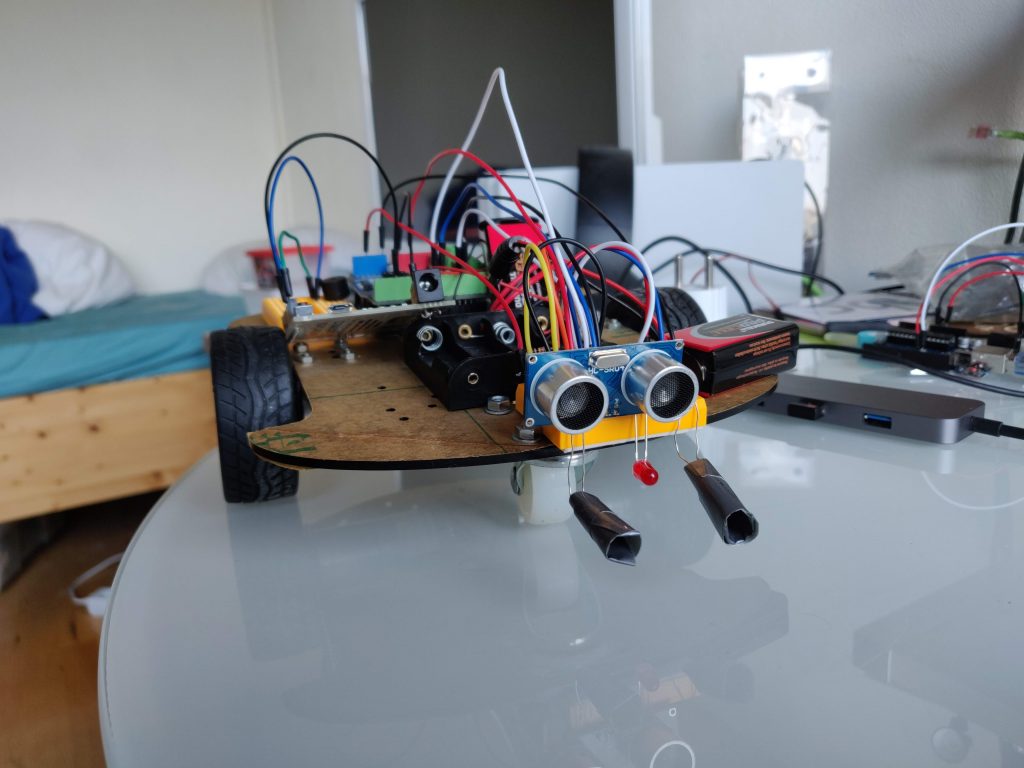
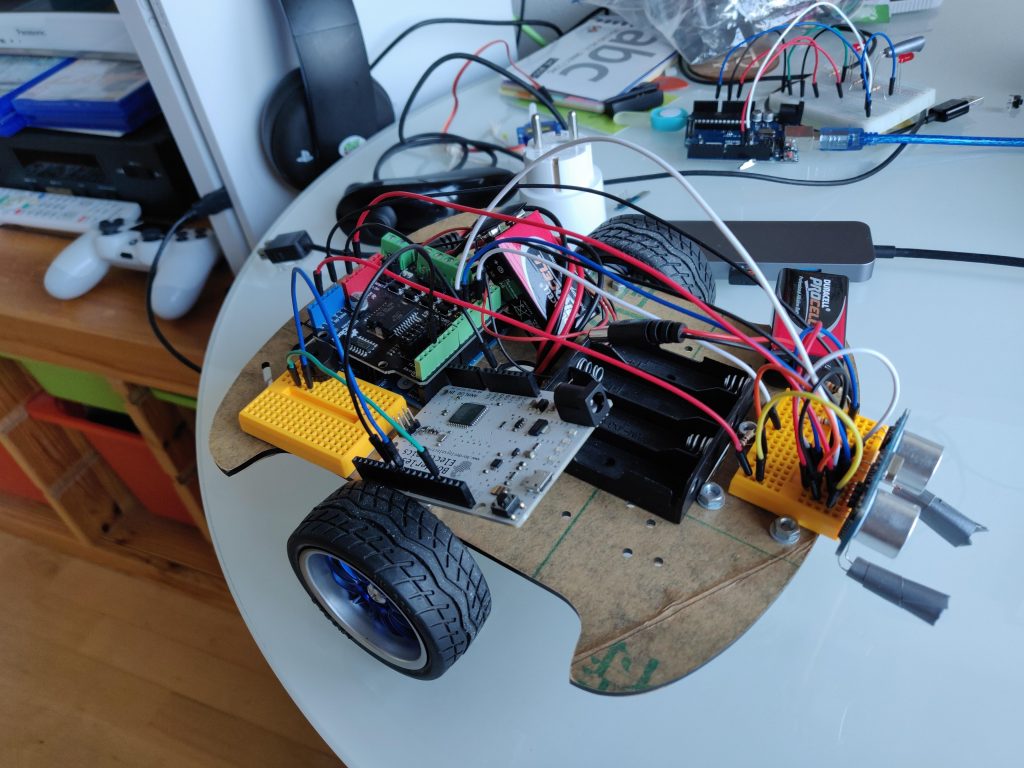
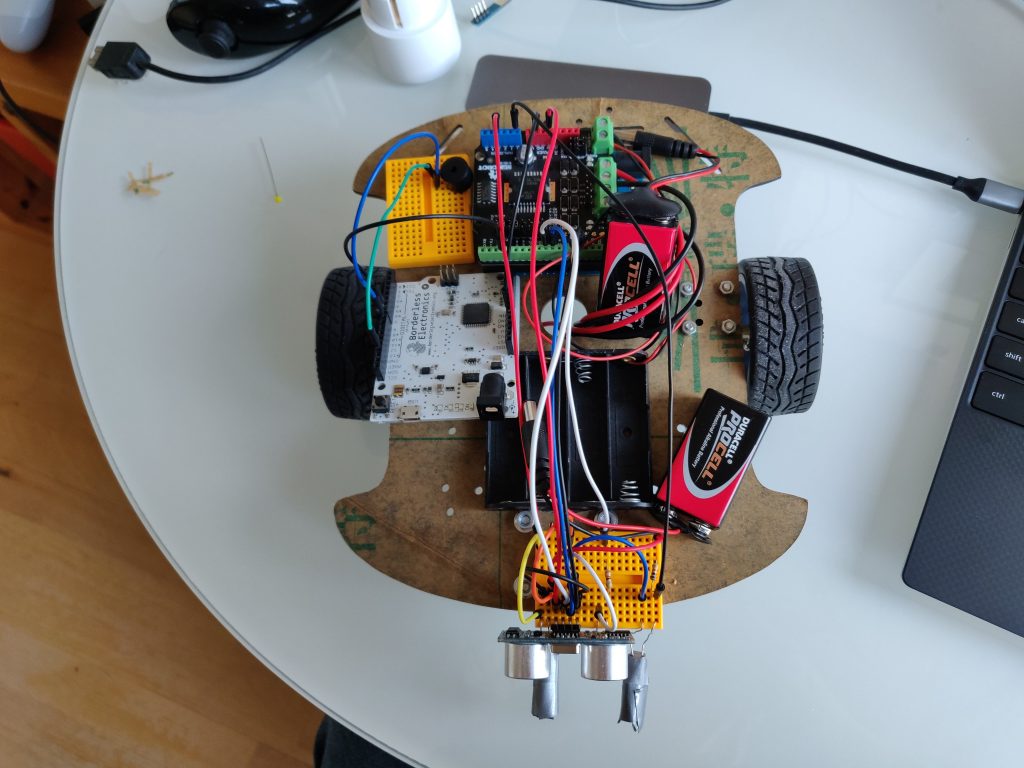
In the images you can see what I came up with. It’s an alarm clock that drives around by itself, avoids frontal collisions and plays the imperial march from star wars. There’s two Arduinos on board, one to take care of the driving, collision avoidance and interfacing with my laptop and the other just to play the song. In the interface I made on my laptop you can set an alarm, and when that time is reached the alarm clock’s dock gives a couple of signals and off it goes. Below is a video to see it in action.
Building everything for Clock-E took quite a lot of time and it doesn’t look particularly finished, but that’s the point of a prototype and I’m very happy I got everything to work just the way I wanted it to.
Programming End Result
30-10-2019
This whole module we’ve been hard at work learning how to program. The other day we had to finish our final assignment and all in all me and my partner Louis are pretty happy with the result.

For this assignment we had to take a postcard and make it do something. I still had an old postcard of a frog lying around so we decided to use that to make a game where you have to catch flies. When you press the mouse button a tongue comes out to the location of your mouse.

If that tongue reaches a fly with the end of it you eat the fly and you gain one point. The game ends when one of the flies reaches the left border of the screen.

Laser cutting some stuff
2-10-2019
Recently I followed a laser cutting workshop where we actually got to laser cut some things out of wood. I really liked the way my images came out so I thought I’d show some off here
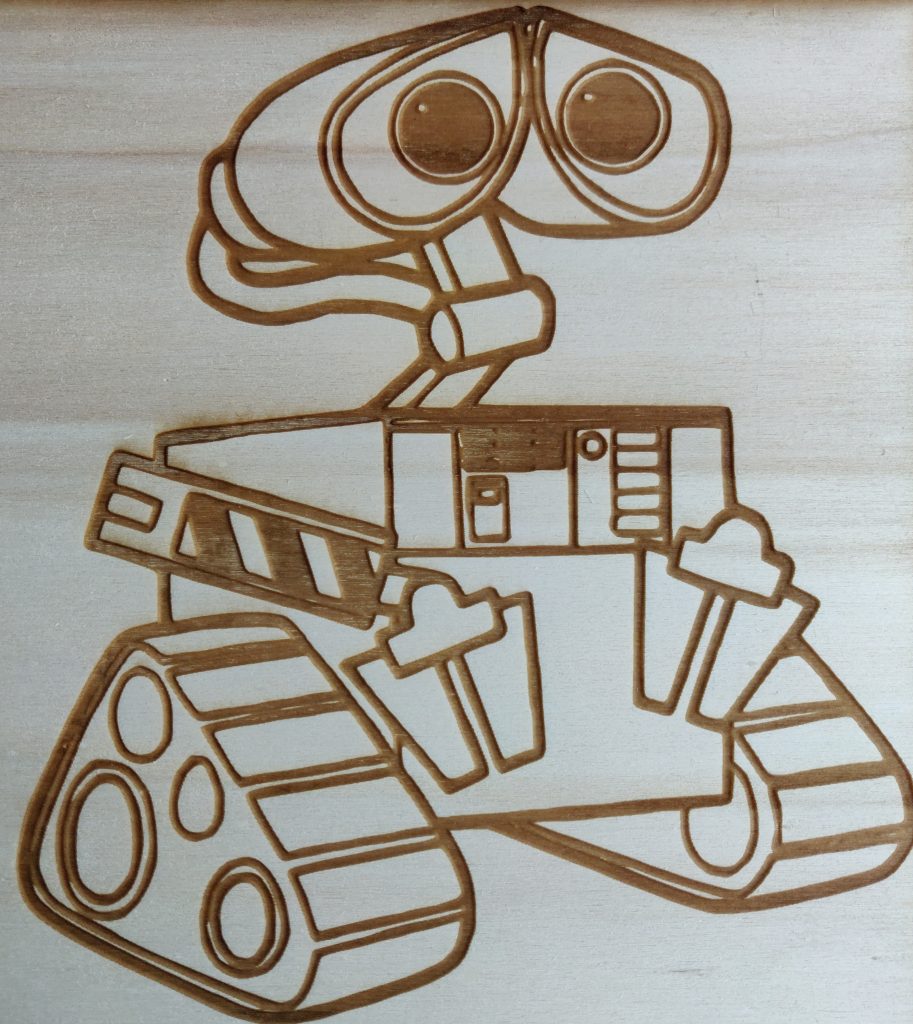
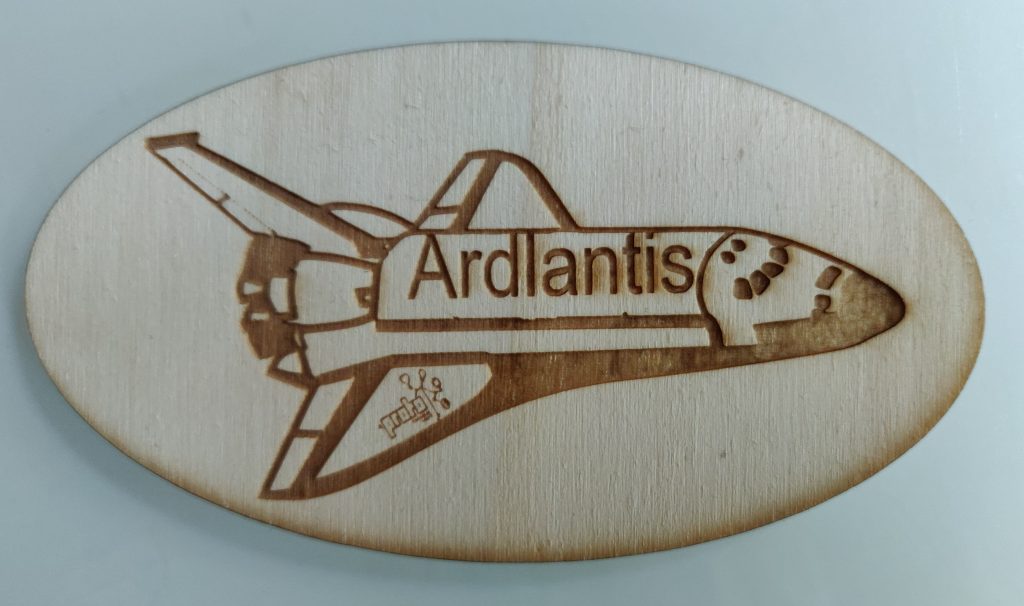
The DIY-laser
24-9-2019
During the final year of high school, me and a friend of mine, Tom, had to do our “PWS” (ProfielWerkStuk). It was a final assignment of sorts where you have to create a hypothesis, do enough research to adequately answer set hypothesis and document everything. The best part was, the subject was completely up to you. That did mean it took us a while to choose a subject but eventually we settled on lasers. More specifically if it is possible to build your own laser completely from scratch. I’m happy to report, yes it is.
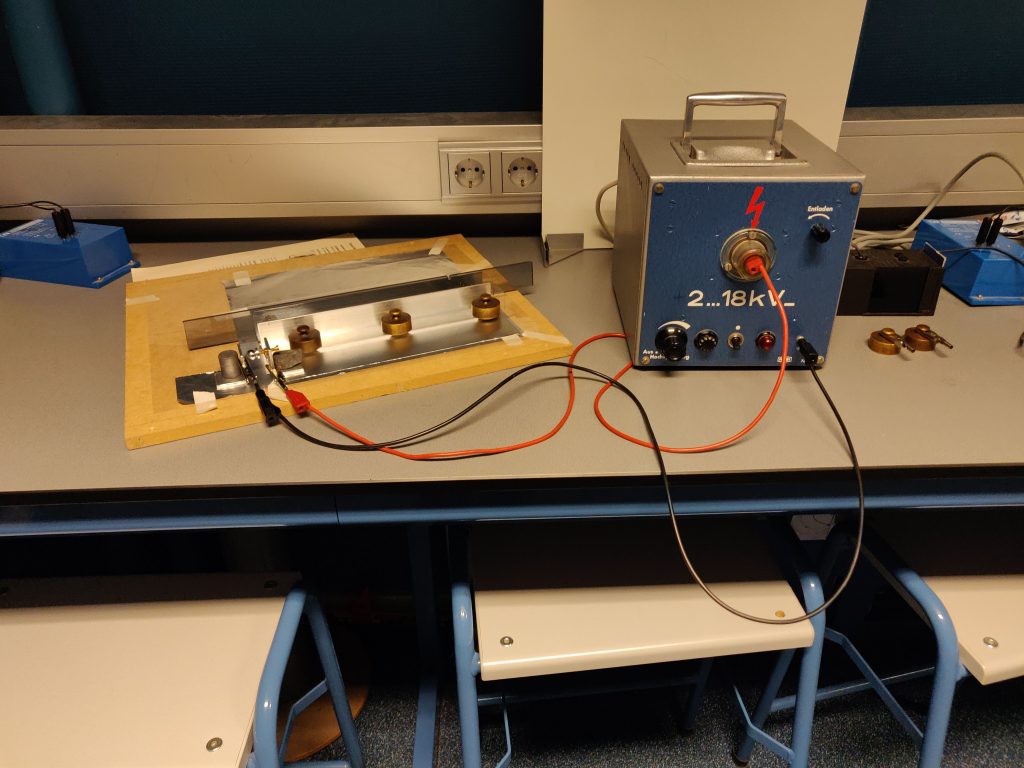
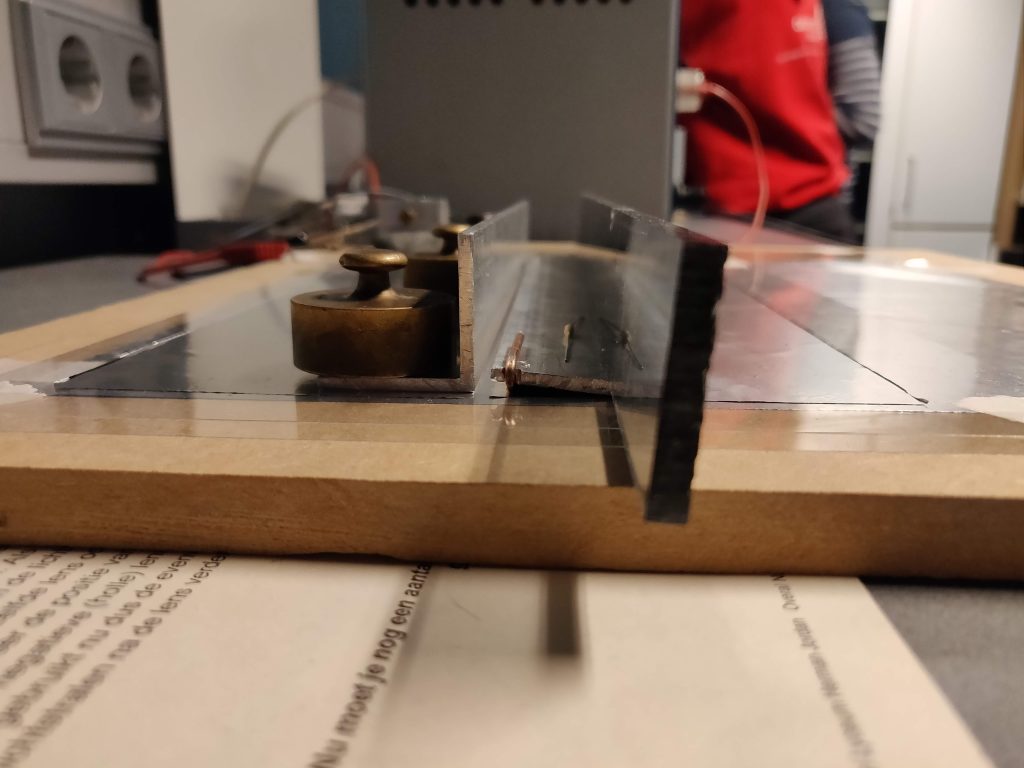
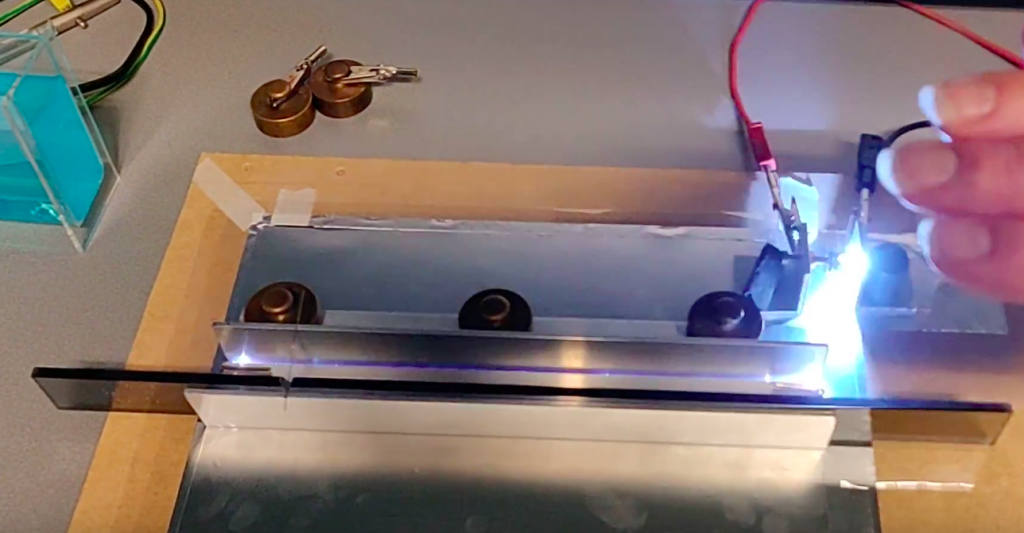
Now I will admit it doesn’t look much like your laser pointer you annoy your cat with, but that was kind of the point. It was meant to be made entirely from stuff you could get at your local home depot (minus the power supply). We only used:
- Aluminium foil
- Some plastic sheets
- Aluminium rails
- A copper wire
- Some weights
- A screw
- Some tape
We got the idea for this thing from this video, but it doesn’t really go into the way it works. If you’d like to know that you’d have to read 12 pages of our report, but very simply put we used a lot of sparks in a linear gutter of sorts between two very precisely aligned rails to create laser light. The light is mostly in the ultraviolet spectrum so you can’t see it in the air, but in the video shown below we placed a piece of paper in front of our laser which makes the dot of light visible. One thing to note is that our laser doesn’t fire continuously but it shoots in bursts because it has a bit of a charging time.
We were very satisfied with our result because we weren’t necessarily expecting it to work as well as it did, and because this was by far the most fun we’d had working on a school project.
0 Comments